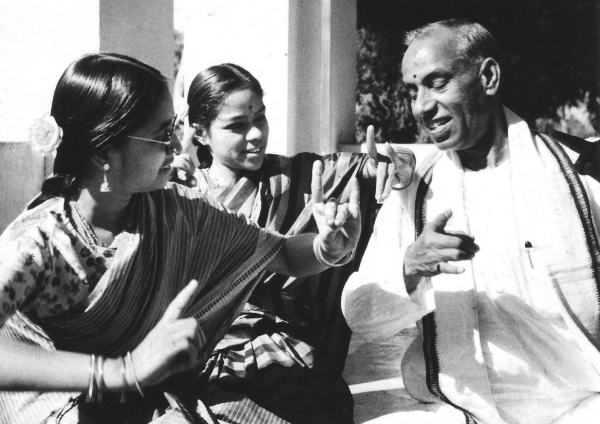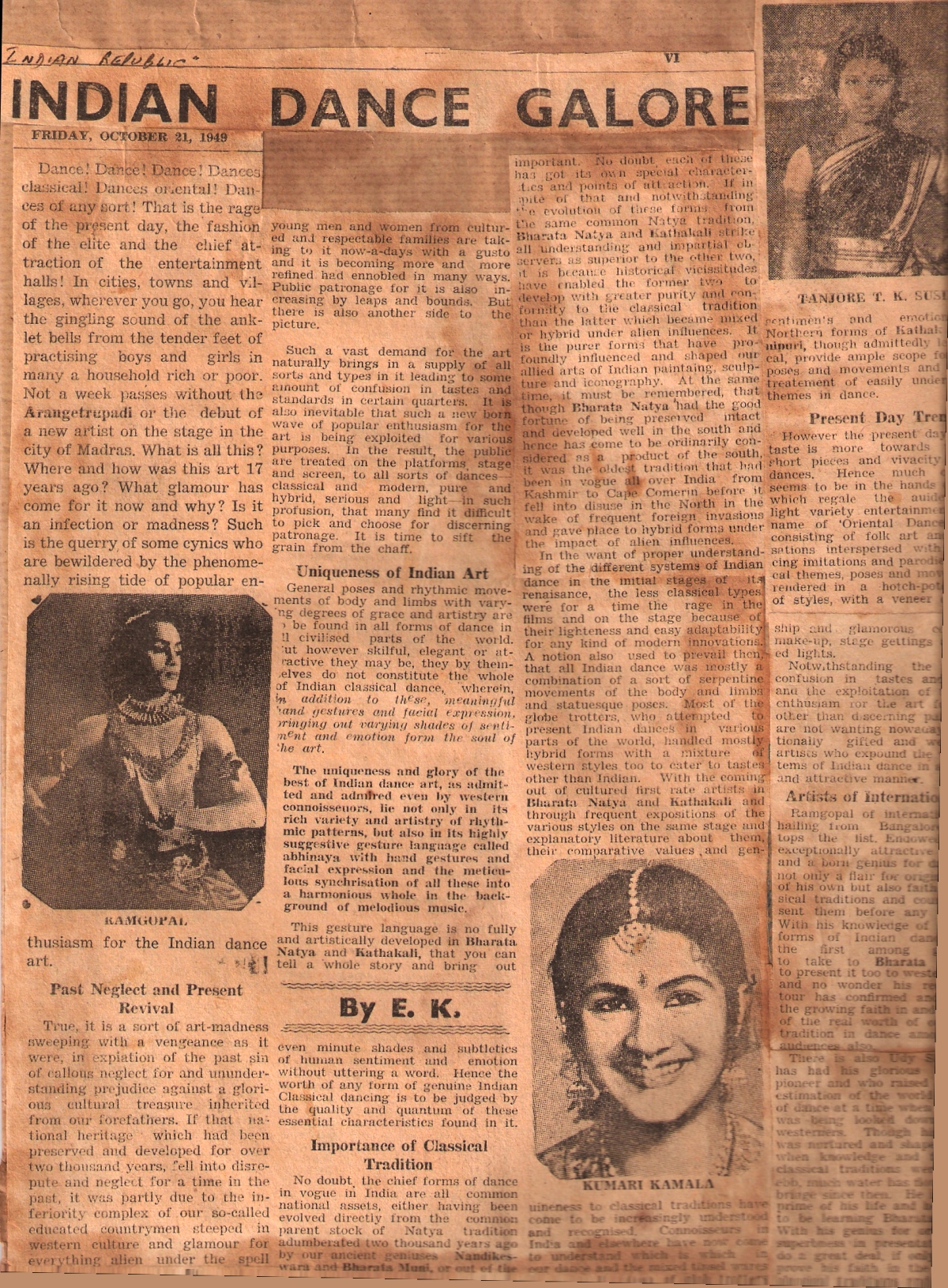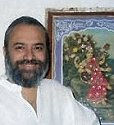
|   |

|   |
E Krishna Iyer: Saviour and servitor of Bharatanatyam - Ashish Mohan Khokar, Bangalore e-mail: khokar1960@gmail.com Based on archival materials from The Mohan Khokar Dance Collection July 29, 2009 August is known for India's Independence Day but in dance, it should be known for E Krishna Iyer, scholar-saviour-lawyer-activist-writer-critic-impresario, dancer, do-gooder….who helped serve and save Bharatanatyam from disintegration. E as in Eswara, his foster father's name, because he was given up for adoption when born to Kailsham and Ananthalakshmi, 8th of 14 children and 4th of 5 who survived, was born in August, 9th to be precise, in 1897, at Brahmadesam (what an appropriate name for one to become so great!) in the Tirunelvelli district of the then Madras state. EKI (for reasons of brevity) was born humble, but what he achieved personally and professionally, cannot be duplicated or paralleled. His accomplishments are so many that this is neither the place for an in-depth assessment nor the forum. He went to school in Ambasamudram and went on to do his BA from the reputed MCC (Madras Christian College) in 1918 and then to Trivandrum to do Law in 1921. Today, it is no big deal to think of doing college from anywhere and the further away from home, the better (for kids)! But those days to even think of leaving one's village and going so far meant either the family had means or the boy was truly gifted and a genius, which our EKI was. He entered Bar-at-Law in 1922, within one year of finishing his Law in Trivandrum and Madras and soon he was a full-time rabble-rousing lawyer who espoused many causes and since he concerns us more in dance, we will focus on that.  He married Parvathi Amma when he was 14 years old and soon his family grew to include K Kailasha Eswaran, K Seetha Raman and Meena Vishwanath. His grandchildren naturally came many moons later and begot the names Ram Kumar, Kannan, Shekhar, Uma Sundari and Krishna. His activism saw him involved in agitation against the Simon Commission in 1930 and in 1932 he was involved with Gandhi's Salt Satyagraha and other assorted protests in that period. In that nationalistic clime when India was in a turmoil, many educated and otherwise Indians were getting together to form forums for protest against British rule and when several great leaders were in the making like the Sarojini Naidus, the Maulana Azads the Rajagopalacharis, the Sardar Patels etc., it was regional activists like EKI who also lent their voices and mite to the cause. Madras then was more important nationally than Delhi. This is where most intellectuals and writers were, after Calcutta. Delhi was a village and a British garrison. The population of Delhi in 1930s was less than Mysore's, under a lakh (hundred thousand for foreigners)! Imagine…today it is over ten million. His voice and activism was so important that twice he was elected a Corporation Councillor for Mylapore division unopposed in 1938 and 1948. He also sang and danced and acted in films, as Arjuna and Brihanala in 'Sairandri' in 1939.  It was his work in revival of Bharatanatyam that makes us honour him most. In 1932/33 he helped stop a government regulation banning the art of the devadasis. His constant articles, rejoinders, speeches, presentations – all contributed towards the dance form's survival until 1947 when India became independent and many others had joined his efforts and thus saved Bharatanatyam for posterity. Without EKI, the art of Sadir, Bharatanatyam as we know it today, would be poorer. Though no one individual can make or mar an art form, EKI played the role of a lighthouse Madras so badly needed. If there was a Bharat Ratna for dance, EKI deserves it most. He also cajoled Music Academy, till then a bastion of brahminical domination and music, to showcase Bharatanatyam by devadasis Varalakshmi and Bhanumati and later, Bala. As its Founding Secretary, he had both the voice and the clout and he did not shun from using either. His skirmishes with the establishment were intense but he was not one to be cowed down easily. He also had the pelf and power of pen. He was the editor of New Age founded in 1934 by HD Rajah and Associate Editor of Free Press. He was the Magazine Editor of Indian Republic and also columnist for Kalki, Dinamani and the Indian Express. He was the Mohan Khokar of Tamilnadu and both became dear friends and EKI remained close and connected to Mohan Khokar till his end years and gifted him many precious letters, photos and memorabilia. (My next book on Bharatanatyam - 500+ pages, 1000 pics - will be ready in 2012 and will be most definitive historical material, all original till date). He was also the Founder Secretary of what we today call Madras Sangeet Natak Academy (Tamil Iyal Isai Nataka Mandram). In his active years he was very instrumental in bringing to fore the talent of many Bharatanatyam greats of yesteryears and today like Varalakshmi-Bhanumati, Mylapore Gowri Ammal, Bala, MK Saroja, Kamala, Kausalya, Padmini…. No concert would be complete without EKI's inputs. He was omnipresent and almost a god, although a very friendly and approachable one. On one occasion, my maternal grandmother sent an idli grinding stone for my mother, then in Baroda. Who carried it on the 5 day, two-station change train? EKI the great. Such was the humility of scholars those days. Today, you see crows strutting off as peacocks! On another occasion, a well-known Madras nattuvanar had no money to feed his family. Who got him work at Kalakshetra? EKI. A genuine do-gooder, his life needs celebration because he was fully and totally devoted to dance. He donned the garb of a girl just to prove dance art was not confined to women of ill-repute and made Bharatanatyam popular. He also helped revive Kavadi, Karagam, Bommalattam, Poikkal Kudhirai Attam. EKI's contribution is immense in revival and survival of Bharatanatyam as a form, in the context of his time and clime. Bharatanatyam as a dance form had been languishing with little patronage and direct support, in cities. By raising issues, being pro-active and taking up its cause, EKI gave it a renewed mission and vision. By his vociferous pen and motor-mouth abilities, he saw to it that this form did not fade away. Many benefited by his actions, though they may not give him direct credit. Sruti, the south-based music and dance monthly, instituted an award in his memory and brought out a special feature and an exhibition-of-sorts in Delhi. Many stalwarts in the field of Bharatanatyam were bestowed this award, including those who knew EKI directly like Kamala, MK Saroja, Mrinalini Sarabhai, Kalanidhi Narayanan, KJ Sarasa and US Krishna Rao. He died on 3rd January 1968 but not before the Padmashri and Sangeet Natak Akademi's prestigious Fellowship had come his way. EKI will never be forgotten by those who value sincere, solid and sustained commitment to art. Long live EKI the great!  Ashish Mohan Khokar takes special delight in reconstructing dance history. His own Masters in Indian History (merit lister, Delhi University) helps him in this process as also his inheritance, born as he is to the most distinguished dance family. His father created India's largest dance archives, materials from which now helps him save and serve; rewrite and reconstruct dance history of India. His own world vision (having practically handled many high level projects all over Europe and America) and vast exposure to variety of cultural administration and involvement at home in India, have furthered the process of making him unparalleled, in his generation. He has watched dance for almost 45 years now born to a legendary dance mother, and written about it in last 30 as critic of leading publications (Times, India Today), in addition to his own over 35 books and editing-publishing India's only yearbook on dance, attendance. attendance-india.com |